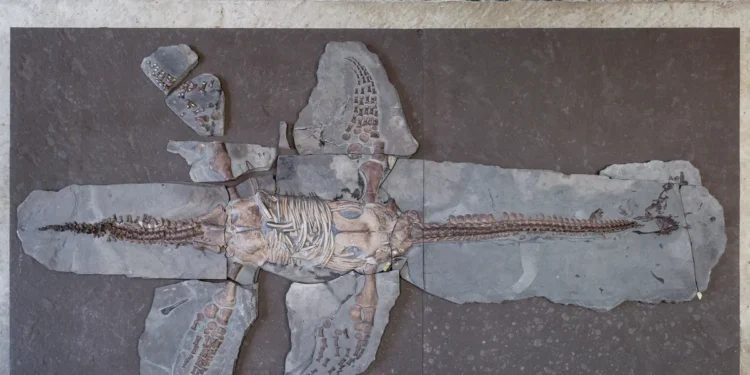A remarkable 183-million-year-old plesiosaur fossil has provided scientists with an unprecedented look at the soft tissues of these ancient marine reptiles, revealing a surprising combination of smooth skin and scales. This discovery, made in Germany’s Posidonia Shale, offers fresh insights into how plesiosaurs adapted to life in the ocean, challenging previous assumptions about their biology and evolution.
A Rare Glimpse Into Plesiosaur Soft Tissue
While fossilized plesiosaurs have been unearthed across the globe, well-preserved soft tissues are exceptionally rare. This newly examined specimen stands out as one of the most complete ever found, featuring traces of skin around the tail and front flipper. Researchers identified pigment cells, keratinocytes, and multiple layers of skin, including the outermost stratum corneum, the intermediary stratum spinosum, and the deep stratum basale.
Adding to the intrigue, the fossilized flippers displayed structures resembling reptilian scales, suggesting that some plesiosaurs had a mix of smooth skin on their bodies and tails, while their limbs were covered in small scales. This contradicts previous findings in other Mesozoic marine reptiles, such as ichthyosaurs, which were scaleless.
How Skin and Scales Shaped a Marine Predator
The presence of both skin and scales may have given plesiosaurs an evolutionary advantage, helping them move efficiently through the water while also navigating the rugged ocean floor. Their smooth skin likely reduced drag, allowing for faster swimming, while the scaled flippers may have provided extra protection and grip in shallow environments.
“This discovery offers us an unparalleled glimpse into the appearance and biology of plesiosaurs,” said Miguel Marx, a PhD student in geology at Lund University and lead author of the study. “Seeing fossilized skin cells that had been preserved for 183 million years was almost like looking at modern skin.”
Unlocking the Secrets of Prehistoric Life
Beyond the fascinating details of plesiosaur anatomy, this fossil underscores the potential of soft tissue preservation to reshape our understanding of ancient marine life. By analyzing the microscopic structures of prehistoric skin, scientists can refine life reconstructions of these long-extinct creatures, improving our understanding of their adaptations and behavior.
This study adds another chapter to the ongoing exploration of Earth’s prehistoric past, showing that even after millions of years, some biological traits remain remarkably unchanged. As researchers continue to uncover new fossils with preserved soft tissues, the secrets of the Mesozoic seas are gradually coming to light.
Join the Conversation!
Have something to share or discuss? Connect with us on Facebook and join like-minded explorers in our Telegram group. For the latest discoveries and insights, make sure to follow us on Google News.











